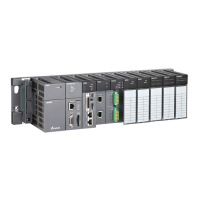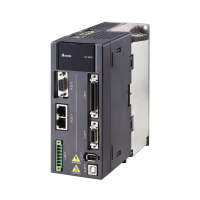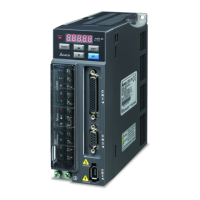AH500 Module Manual
10-48
11. Select “Network” >> “Scanner Setting” and “Scanner setting” dialogue box pops up. Select
“Slave Mode” and fill the data length of the slave and the mapping address of the device.
In this example, AHCPU510-EN monitors 5 registers in AHCPU530-EN and therefore the output
length and input length are both set to 10 bytes. “Master -> Slave Start Address” and “Master <-
Slave Start Address” are set to D2000 and D2500 respectively. The two addresses are specified
by ISPSoft in the above step. But users could modify them.
Click “OK” after setting is over.
Note:
(1) “Output length” and “Input length” are for specifying the data length when AH10DNET-5A
serves as the slave.
(2) “Master -> Slave Start Address” is used for setting the mapping starting address for output
as AH10DNET-5A is in slave mode and the data that the master sends out will be updated in
the area.
“Master <- Slave Start Address” is used for setting the mapping starting address for input as
AH10DNET-5A is in slave mode and the data in these registers will be transmitted to the
master in real time. In the DeviceNet software, the starting address of AH10DNET-5A (slave)
can be modified only here.
(3) In the configuration interface, AH10DNET-5A can be set to the master mode or slave mode.
12. Select “Network” >> “Download” and the following dialogue box pops up. Click “OK” to
download the configuration data to AH10DNET-5A automatically.
Note: If E7 appears on AH10DNET-5A, please remove the DeviceNet terminal before
downloading. Otherwise, Failure to download will occur.
13. After downloading is completed, power off the AH500 series CPU module and then repower it.
At the moment, AH10DNET-5A is set to the slave mode.
Note: Pick “Master Mode” in step 11; follow the steps and AH10DNET-5A will be set to the
master mode.

